Posted on 7/12/13 by Courtney Smith
You know what’s awesome?
Breathing.The act of breathing is an involved one—multiple structures across multiple systems are involved, and yet, like sight, we take it somewhat for granted. I'd wager that we take all of our involuntary actions for granted. Breathing, blinking, smelling, tasting, our heart beating, our stomach digesting—most of us never stop to think how lucky we are that this stuff happens without a hitch. But I digress. Back to breathing!
Do me a quick favor: breathe in once, nice and deep, and then exhale.
Done? Okay, good. In the maybe two seconds it took for you to complete that action, your respiratory system was hard at work turning that deep breath into usable oxygen and nutrients for the rest of your body. Pretty wild, huh?
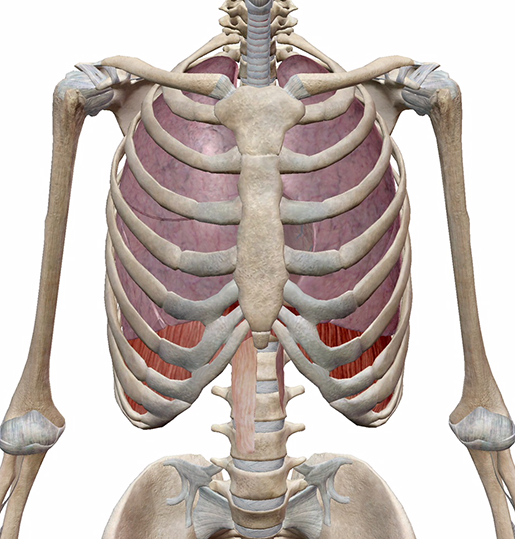
Images captured from Visible Body Suite.
The lungs (purple structures within the thoracic cage) are organs that act as the site for gas exchange. Each lung is conical in shape, very elastic, and spongy in texture. The left lung is divided into two lobes: upper and lower. The right lung is divided into three lobes: superior, middle, and inferior.
Within each lung is a respiratory tree, comprised of the bronchi and its branching subdivisions—the primary bronchi, which branches into the secondary bronchi, which branches into the tertiary bronchi, which branches into the bronchioles.
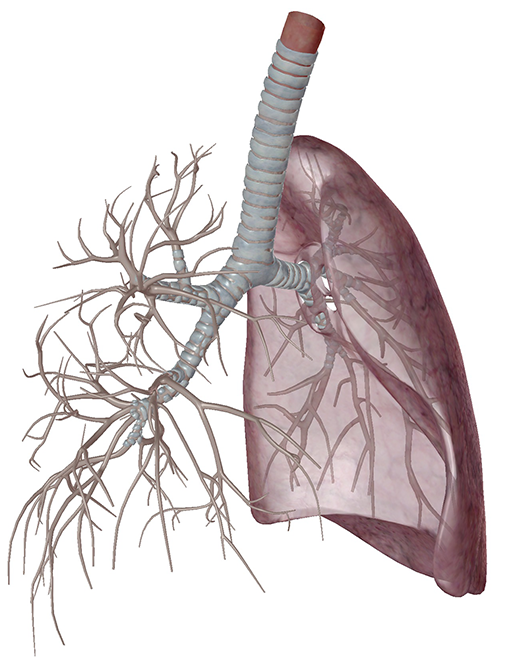
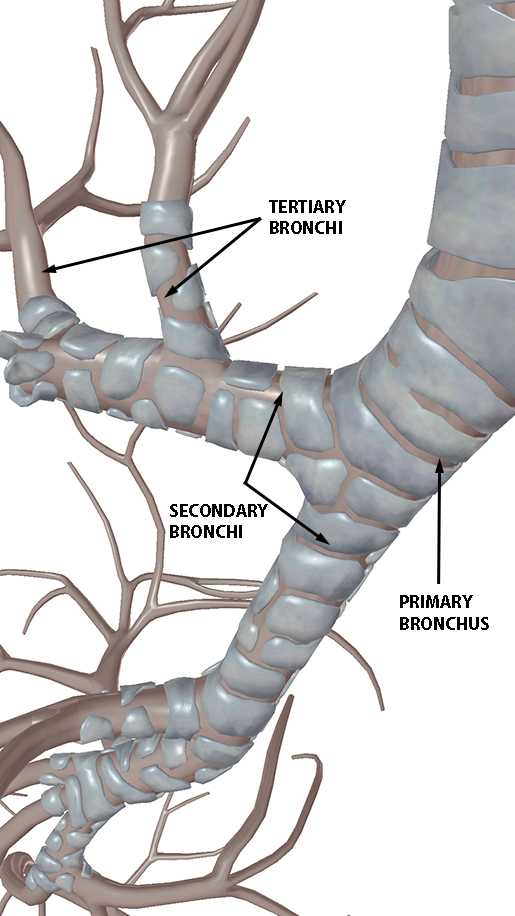 Images captured from Visible Body Suite.
Images captured from Visible Body Suite.
The bronchi deliver oxygen-rich air to the lungs, where gas exchange occurs in tiny air sacs called alveoli. Exhaled air (oxygen-poor and carbon dioxide–rich) go the reverse way—from the ends of the bronchioles and back up.
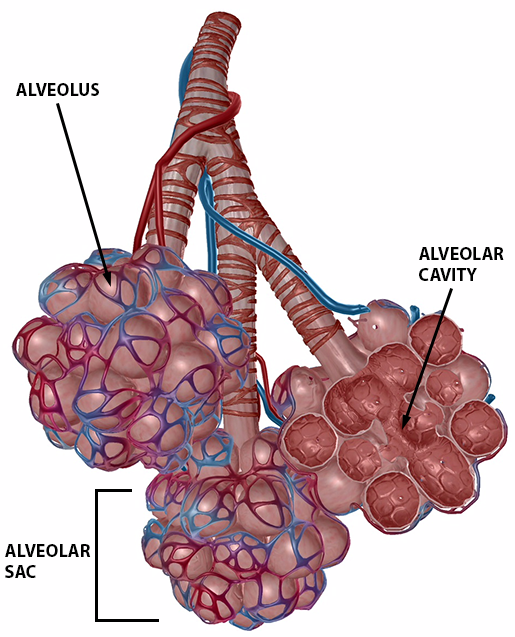
Images captured from Visible Body Suite.
Alveoli are tiny air sacs in the lungs—1.5 million per lung!—encased within capillary networks. Oxygen diffuses from the alveoli into the capillaries, which carry it out of the lungs and to the rest of the body; carbon dioxide diffuses into the alveoli and is then exhaled out of the body. The respiratory membrane is the barrier through which oxygen and carbon dioxide are exchanged.
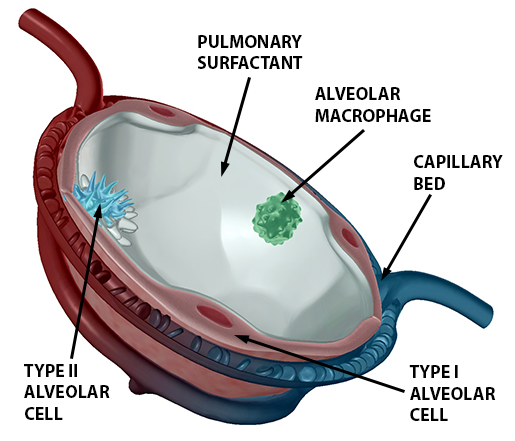
Images captured from Visible Body Suite.
In pulmonary circulation—circulation between the heart and lungs—the vasculature are flipped. While normally arteries bring oxygenated blood away from the heart to the rest of the body, the pulmonary arteries take deoxygenated blood away from the heart to the lungs for replenishment. The pulmonary veins, likewise, return oxygenated blood to the heart from the lungs. 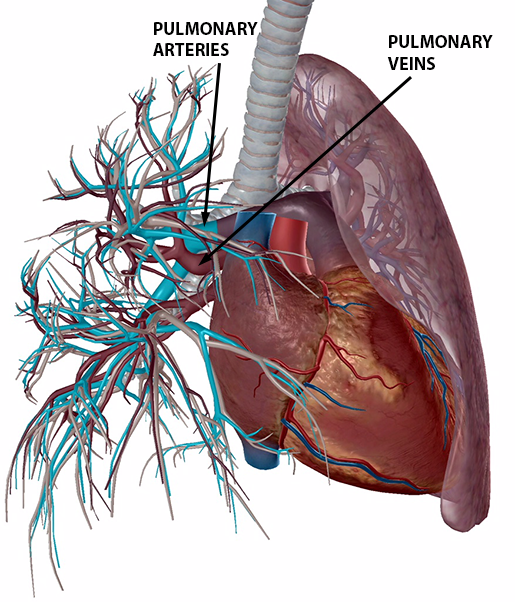
Image captured from Visible Body Suite.
Want to learn more about the respiratory system and how it works? Check out our Respiratory System eBook!
Be sure to subscribe to the Visible Body Blog for more anatomy awesomeness!
Are you a professor (or know someone who is)? We have awesome visuals and resources for your anatomy and physiology course! Learn more here.
- The Upper Respiratory System
- Parts of a Human Cell
- 5 Cool Facts about the Middle and Inner Ear
Additional Sources:
When you select "Subscribe" you will start receiving our email newsletter. Use the links at the bottom of any email to manage the type of emails you receive or to unsubscribe. See our privacy policy for additional details.
©2025 Visible Body. All Rights Reserved.